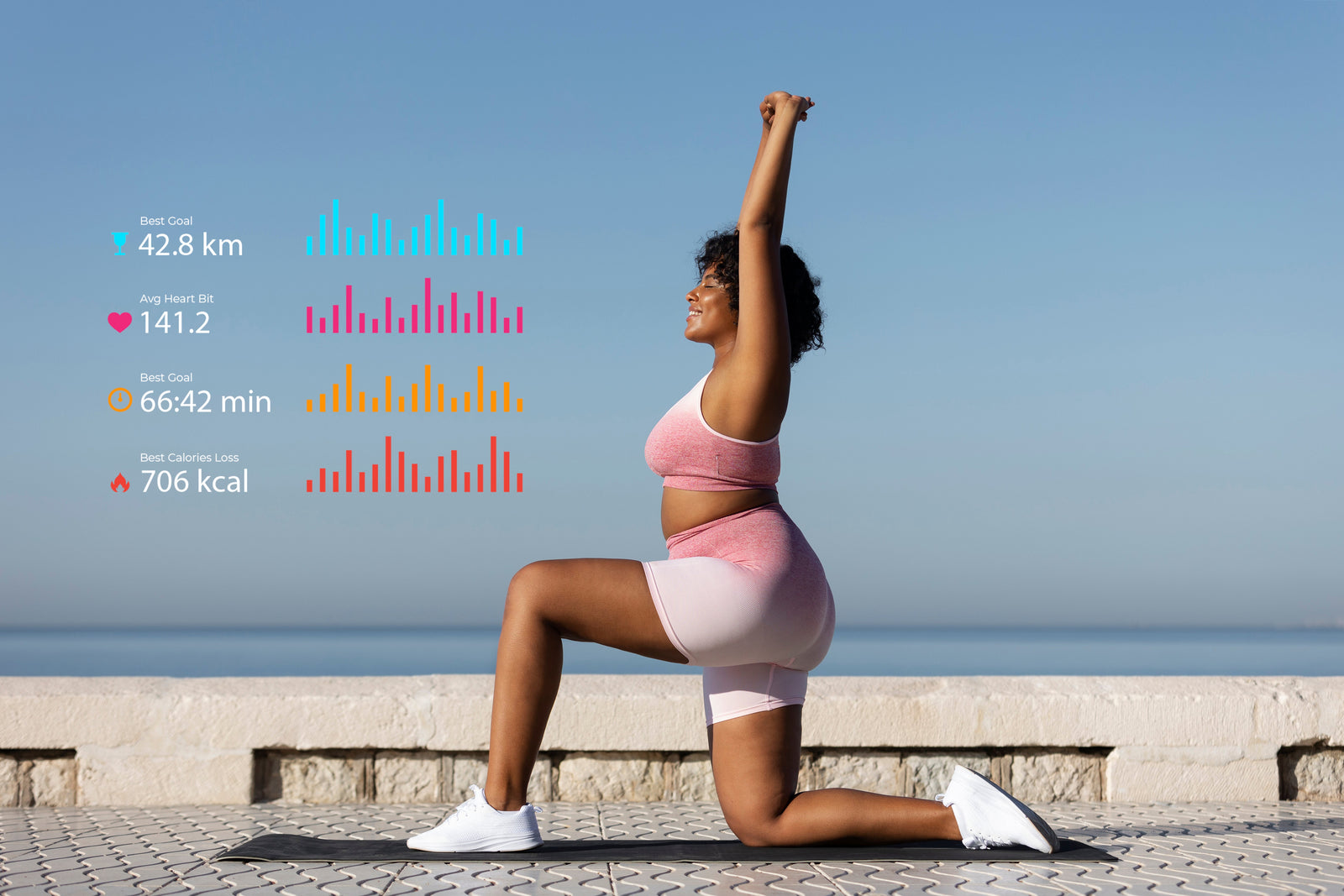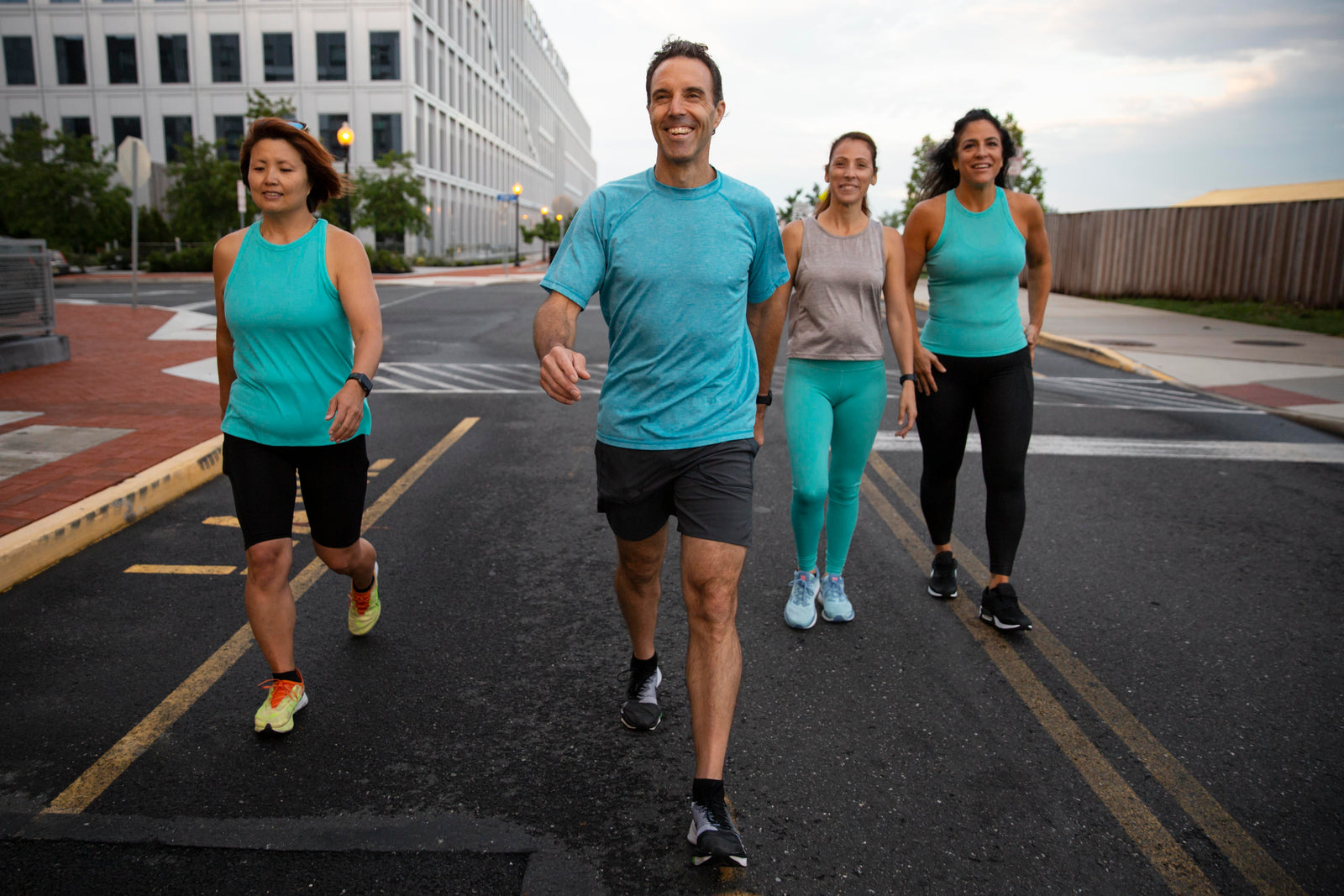Key Trends Shaping Running Shoe Tech
1. Ultralight Foams
Modern running shoes increasingly rely on ultra-lightweight foams, delivering dramatically lower overall weight without sacrificing cushioning. These “super foams” enable taller stack heights—think thicker midsoles—without making the shoes feel heavy. The result: greater energy return and increased oxygen flow during exercise, even in lighter builds .
2. Eco‑Conscious Design
Sustainability is now front and centre. Brands are adopting recycled plastics, organic textiles, and water-based adhesives, moving toward zero‑waste production methods. High consumer demand has led to eco collections using recycled polyester, biodegradable fabrics, and even water-saving adhesives .
3. Next‑Gen Sole Materials
Innovation in sole construction is underway. Polyurethane capsules, for example, provide buoyant cushioning and durable weather resistance while helping runners maintain efficiency. These materials help reduce fatigue and improve traction in varied conditions .
4. Personalized Footwear Options
Customization is now mainstream. Consumers can tailor both aesthetics and performance features—such as cushioning, support, and fit—based on foot shape and running goals. Many brands offer personalized fit services, and some allow consumers to effectively build a shoe from the ground up .
🏃♂️ Why These Trends Matter
Performance gains from lighter weight and better energy return remain central to elite-level design.
Sustainability resonates with a growing eco-conscious consumer base, making green materials and circular production increasingly valuable.
Durability and traction through improved sole tech make running shoes more reliable for varied conditions.
Fit personalization leads to better comfort and fewer injuries—ideal for both recreational and competitive runners.
Final Thoughts
Today’s running‑shoe tech combines performance, comfort, and environmental awareness. From responsive “super foams” and buoyant sole capsules to recycled materials and 3D‑inspired customization, the focus is on smarter, greener, and more personalized gear.
Need help selecting a shoe with these innovations—or exploring other trends like carbon‑plate racers or sensor‑based smart shoes? Just let me know!
A recent study involving over 11,000 Norwegian adults has revealed that walking more each day can significantly lower your chances of developing chronic lower back pain later on . Specifically:
Walking between 78 and 100 minutes daily was linked to a 13% lower risk, while going beyond 100 minutes a day yielded a 23% reduction .
Walking at a moderate or brisk pace also helped further reduce risk—by about 15–18% compared to slower walkers .
The benefits are attributed to improved spinal mobility, activation of core and stabilizing muscles, better circulation, reduced stiffness, and less inflammation. Bonus: mood-boosting effects from endorphins and dopamine make exercise a double win .
Given that lower back pain affects tens of millions globally and costs billions in healthcare, walking offers a low‑cost, accessible solution with real impact .
📝 Key Takeaways
Aim for at least 78 minutes of walking daily to see noticeable risk reduction (around 13%).
Over 100 minutes per day gives even greater protection—up to 23% lower risk.
A brisk pace provides additional benefits, but total daily walking time appears more important.
You can break it into shorter walking sessions across the day—consistency matters more than one long walk.
Walking also supports mental health, promotes healthier posture, and strengthens your core—all crucial to preventing back issues.
Dr. Natasha Desai provides a decade-by-decade breakdown—plus guidance for the busy “weekend warrior”—on how best to stay active and healthy as you age.
🧒 20s & 30s: Build a Strong Foundation
Strength training: Focus on correct technique, movement quality, and joint health. Aim to lift with proper form, building a base for longer-term fitness .
Cardio fitness: Mix moderate (e.g. jogging, swimming, cycling) with occasional high-intensity intervals to enhance cardiovascular health and endurance .
40s: Maintain Power and Coordination
Continue cardiovascular workouts and include structured interval sessions for enhanced heart and metabolic health.
Prioritize mobility and coordination training, like single-leg work or balance drills, to stay resilient against age-related decline.
50s: Strengthen and Refine Balance
Use functional exercises like split squats to improve neuromuscular coordination.
Focus on the 5‑Time Sit‑to‑Stand Test: completing five sit‑to‑stands in under 20 seconds suggests good mobility. If it takes longer, incorporate balance and unilateral work safely over time .
60s: Build Power, Reduce Fall Risk
Include power-based moves like fast step‑ups or vertical jumps (10–15″) to boost lower-body explosiveness, functional ability, and fall prevention .
Balance-focused training such as heel-to-toe walking or one-leg stands should become staples in your weekly routine .
70s & Beyond: Prioritize Strength, Mobility, and Safety
Emphasize resistance training with safe modifications (e.g., wall push‑ups). Even 1–5 push‑ups build upper-body control and mobility.
Regular low-impact cardio like walking helps keep joints active and stamina maintained.
Add balance and coordination exercises daily to preserve independence and prevent falls .
Weekend Warriors: A Simple Rule for Safety
If you typically only exercise on weekends, Dr. Desai advises not to overexert. Instead, distribute more manageable sessions throughout the week when possible, to avoid injuries and maximize consistency—and consider a cardiology check if you're over 35 before launching into heavy workouts .
🔍 Why These Recommendations Matter
According to WHO and U.S. guidelines, adults aged 18–64 should aim for at least 150–300 minutes of moderate aerobic activity (or equivalent in vigorous activity) per week, plus strength training for all major muscle groups twice weekly .
Those 65 and older should additionally include regular balance training, ideally three or more days per week, to reduce risk of falls and retain functional mobility .
It's never too late to start: even seniors who begin exercising later in life see significant health benefits in strength, cognition, and disease prevention .
🗓️ Sample Weekly Routine
Component
Example Schedule
Moderate Cardio
30 min/day, 5 days/week
Strength Training
2–3 sessions/week targeting all muscles
Power & Balance
3+ sessions/week including step-ups, single-leg stance
Mobility & Flexibility
Daily stretching, yoga, or tai chi
Flexibility and low-impact practices like tai chi or yoga can preserve joint mobility and balance—especially for older adults .
✅ Final Thoughts
No matter your age:
Start with moderate aerobic activity and muscle‑strengthening exercises, adjusting intensity and focus for your decade.
Add balance and power moves in midlife and beyond to support mobility and fall prevention.
Spread out your workouts evenly across the week—even short bursts matter—and prioritize safe, sustainable routines.
Whether you're in your 30s building strength or in your 70s maintaining independence, consistent, age‑appropriate movement is the real key to staying fit long-term.
A large-scale study published in The Lancet Public Health suggests that walking 7,000 steps per day—not the often‑quoted 10,000—is sufficient to unlock most of the health gains we've long associated with higher activity levels. Researchers analyzed 57 longitudinal studies, involving more than 160,000 participants, linking daily step count to reductions in mortality, cardiovascular disease, dementia, type 2 diabetes, and depression
Major Health Takeaways:
47% lower risk of all‑cause mortality when comparing 7,000 vs. 2,000 steps per day.
38% lower risk of dementia, 25% lower risk of cardiovascular disease, and 22% less likelihood of developing type 2 diabetes
Benefits for depression and cancer mortality were also observed, with depressive symptoms reduced by roughly 22–31%.
Beyond 7,000 steps, additional gains continue, but increase more slowly—small incremental benefits up to around 10,000–12,000 steps, particularly for older adults, who keep seeing further reductions in mortality risk beyond the initial plateau .
🌟 Origins of the 10,000‑Step Myth
The famed 10,000-step goal traces back to a 1960s Japanese marketing campaign promoting a pedometer called "Manpo‑kei" (literally “10,000‑steps meter”). It had no scientific basis—just catchy branding that stuck
Why 7,000 Steps Are Key
The “sweet spot” for major health gains is between 2,000 and 7,000 steps/day; going from 2,000 to 4,000 steps yields most of the improvements.
While the curve flattens after 7,000 steps, additional steps still deliver modest but meaningful benefits up to ~12,000/day .
Older adults may benefit from walking more—8,000–12,000 steps can further reduce risk for mortality and chronic conditions.
Tips for Getting More Steps—without the Pressure
1. Focus on consistency, not perfection
Walk in multiple 5–10-minute bursts throughout the day—little bursts add up, and even modest increases are worthwhile .
2. Don’t worry about pace—unless you're older
The health gains depend more on overall movement than speed. Still, for adults over 60, even increasing your cadence by roughly 14 steps/minute (~100 steps/min) aids mobility and reduces frailty risk .
3. Tailor your goal to your routine
If you currently average around 3,000–4,000 steps/day, gradually push toward 7,000. If you already track daily steps, aim higher if you’re comfortable. But most health gains occur around that 7,000 mark.
Quick Summary Table
Step Range
Health Benefits
2,000 → 4,000 steps
Notable reductions in mortality, dementia, diabetes
~7,000 steps/day
~47% lower risk of death; reduced risk of CVD, dementia, depression
7,000 → 10,000–12,000
Additional but smaller gains, particularly for older adults
Any increase
Better than none—every step counts toward long-term health
Final Thought
The science has shifted. We now know that 7,000 daily steps is a realistic, evidence-based target that captures most of the well-known benefits once attributed to 10,000 steps. While extra movement beyond that continues to help—especially if you’re older or active—walking more than you currently do is what truly matters.
You don’t need perfect step goals. You just need to take more steps overall.



